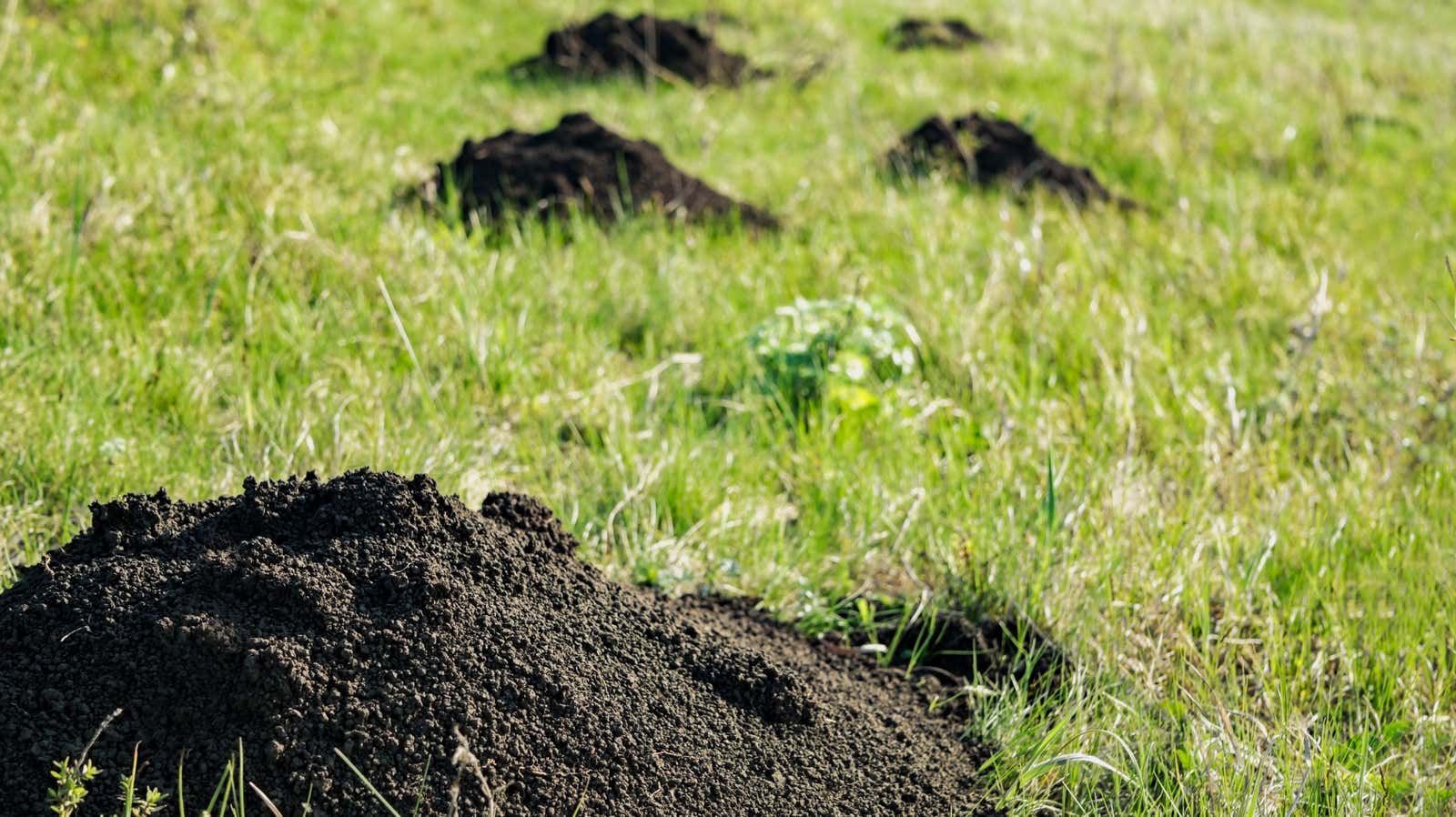How to Tell Which Animal Is Burrowing in Your Yard

Let’s say you go outside one morning and find that someone – or something – is digging holes in search of a buried treasure (albeit a relatively small one) in your yard. You probably want to get to the bottom of it.
Why? If sincere curiosity isn’t enough, but you would like to encourage the creature(s) to move on, it would be helpful to know which one is destroying your property. Here are some of the animals that may be responsible for your new landscape, and how to spot their handiwork.
moles
- Dig holes in the shape of volcanoes
- Also dig elevated tunnels with quarter-sized entrances
- Your soil most likely contains earthworms and grubs (i.e. mole buffet).
voles
- Create narrow paths called “runways” throughout your yard (usually 1-2 inches wide and in the top 2-3 inches of soil).
- Sometimes shallow underground tunnels are also dug.
- Preferred Nesting Sites: Near gardens , usually under shrubs, ground cover, thick mulch, or in woodpile.
Chipmunks
- Leave shallow holes from digging for food
- Create vast tunnel systems as they burrow, with entrances the size of 50 cents and surrounded by dirt.
- Favorite burrow sites: under sidewalks, near houses and barns, and along the root system of trees.
skunks
- According to Adam Terpen of the Ohio Wildlife Center , when they dig for food, they create conical holes about 3 inches deep, “like a pencil stuck into the ground and then spun.”
- Also dig holes that are about 8 inches wide and fairly deep.
- The burrow entrances are about the size of a grapefruit, and pebbles usually accumulate around the front.
- Favorite digging sites include: below decks, sheds and porches.
- The characteristic smell of a skunk is also a sign that they are digging, but the absence of this smell does not necessarily mean that you are safe: it usually takes 10 to 14 days for a skunk’s stink glands to fill up, so you can catch them digging between sprays.
raccoons
- Dig burrows similar to skunk burrows , but slightly larger.
- If you find hair on a branch near the burrow, this could be a clue that it was a raccoon.
- Uses its claws and tiny hands to cut grass and turn over pieces of turf.
Marmots
- Dig holes the size of a soccer ball , with a mound of dirt at the entrance
- Burrows can have multiple entrances and exits.
- Favorite burrow sites include: around decks, storage areas, and manhole houses.
gophers
- The entrances to the tunnels have large crescent-shaped or fan-shaped mounds of earth.
- Tear grass and uproot plants while they dig
- May chew/gnaw through electrical wiring and destroy sprinkler systems.